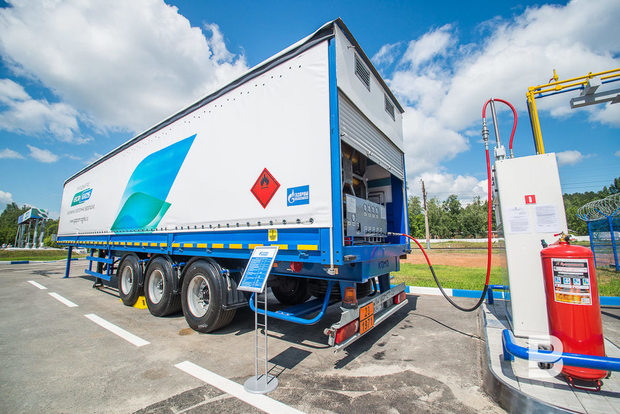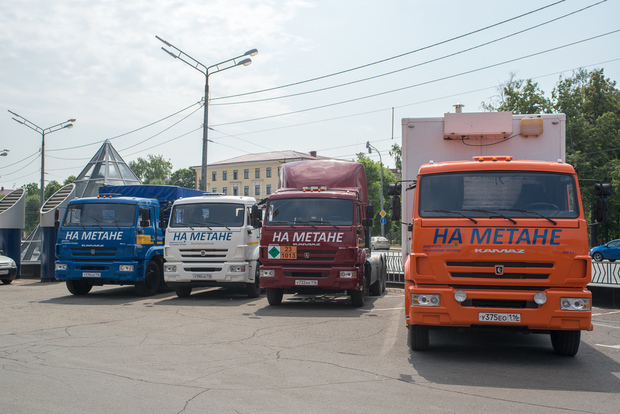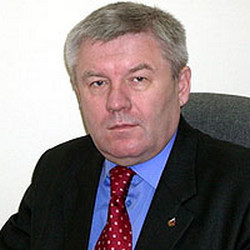Why it is difficult for Gazprom in Tatarstan
The NGV fuel market is developing not as fast as planned
The NGV fuel market in Tatarstan is growing not as fast as the authorities would like. The development programme of the market worth at about 75 billion rubles has been recognized ineffective for teh second consecutive year. Everything rests on the contradiction: gas vehicles are not getting more because of the lack of filling stations and the filling stations are unprofitable due to the lack of demand. The monopoly of Gazprom is not good for the business, and the advantages of gas are exaggerated, experts say. Read more in the article of Realnoe Vremya.
It has become two times better
This year, the Ministry of Economy of Tatarstan submitted to the Cabinet of Ministers more positive intermediate results of the monitoring of government programmes, which consume 96% of the regional budget. The analysis, studied by Realnoe Vremya, showed that over the past year their overall efficiency increased: ineffective programmes became two times less.
The financing of all government programmes in 2016 cost 255,1 billion rubles. A large part of this amount — 71,9% — was received from the budget of Tatarstan, 15,1% — from the federal budget. 11,8% were taken from extra-budgetary sources and the remaining 1,2% — from municipalities.
The Ministry of Economy, assessing the programmes, divides them into three categories: performed with high efficiency (planned indicators are reached at more than 95%), satisfactory (80% or more) and with low efficiency (indicators are achieved at less than 80%).
Out of 31 programmes, which de facto were in force at the end of 2016, 22 fell in the first category. Seven programmes were recognized as satisfactorily effective. Two programmes were recognised performed with low efficiency — ''The development of NGV fuel market'' (RRGT, the estimated cost of the programme — 75,8 billion rubles) and ''The development of manufacturing industries''.

Plans are faster than the market
The programme for the NGV fuel market, approved in April 2013 and intended until 2023, is recognized ineffective. It turned out to be in the third category by the results of 2015.
Its purpose was to reduce polluting emissions from road transport and growth in sales of compressed natural gas (CNG). But the central provisions of the RRGT was the procurement of gas engine transport and the construction of new CNG filling stations. In the final stage of the programme it was to be purchased 15,000 vehicles on gas and 60 new gas stations commissioned.
Now it is being the second phase of the programme (2014-2018), and the specified indicators are achieved not in full, according to the report on the RRGT in 2016. For example, two years ago, in accordance with the programme it was planned to procure a total of 832 units of gas engine vehicles, in 2016 — 845 units. In fact, in 2015, it was purchased 318 units, and in 2016 — only 72. The plan was performed only at 8,5%, according to the report. The plan for the conversion of vehicles for CNG use was implemented at 55,6%.
The indicators on the construction of new gas filling stations, according to the government, are being achieved. In 2015-2016, it was to introduce eight stations. In 2015, not a single station was built, but last year nine were commissioned.
Few stations, few cars
Not the last place in the development of the CNG infrastructure Tatarstan gave to Gazprom. In 2015, the government adopted a ''road map'', according to which Gazprom Gazomotornoye Toplivo is to create a distribution network and to build in Chistopol a complex for the liquefaction of natural gas worth at about 9 billion rubles. Later, the Cabinet of Ministers and the affiliate of Gazprom developed a programme that allows to compensate the owners of vehicles 30% of the costs during the transition to methane.

Preparing the programme, the developers noted that vehicles using CNG are produced by the world's leading automakers: BMW, Chrysler, Honda, Audi, Toyota, etc. The vehicles on gas are produced by local KAMAZ as well. But, according to its representatives, for now the network of gas filling stations is growing not at the rate which would be sufficient to spur the market. ''They are developing, but still not enough,'' said the director of the department for public relations at KAMAZ Oleg Afanasev.
According to him, there are criteria — how many gas stations should be built per a certain number of residents, how far they should locate from each other and so on. ''At the moment these standards are not met yet, and it's one of the problems why gas motor fuel is not getting so popular as in the US, China,'' says Afanasiev.
According to Grigory Sergienko, Executive Director of the Russian Fuel Union, the plan for the development of the СNG consumption is creaking, it's all about the contradiction. Manufacturers claim that an increase in CNG production is hindered by the scarcity of filling stations and the owners of gas stations complain of the lack of demand. Now in Russia there are about 250 gas stations and they all have to be subsidized.
 The existence of the monopoly does not benefit, too. If the gasoline market can be called competitive, then the overwhelming share of the CNG market is taken by Gazprom. ''This programme is actually imposed through the use of force from the side of Gazprom. It needs to develop domestic consumption of gas, that is why it is lobbying for the programme. It is a monopoly and acts using directive-administrative methods,'' said Sergienko.
The existence of the monopoly does not benefit, too. If the gasoline market can be called competitive, then the overwhelming share of the CNG market is taken by Gazprom. ''This programme is actually imposed through the use of force from the side of Gazprom. It needs to develop domestic consumption of gas, that is why it is lobbying for the programme. It is a monopoly and acts using directive-administrative methods,'' said Sergienko.
Besides, the advantages of gas fuel to petrol are exaggerated. For example, the curators of the programme pointed out: the gas fuel is much cheaper than petroleum products, and the transfer of vehicles to gasoline reduces emissions five times in average. However, gas prices in Russia are supported ''quite artificially'' and the climatic conditions are less suitable for use in CNG than in the West, says Sergienko. All this makes the use of gas not profitable.
As for ecological safety, here the modern liquid fuel is not worse than CNG. ''Two years ago, we transferred to the production of fuel of the fifths standard. The range of hazards, for which gasoline lost to gas fuel, is actually minimized. This factor, which stimulated the use of methane as an alternative, also has lost its significance,'' explains Sergienko. ''These obstacles to some extent negate the efforts of Gazprom to increase the use of gas as motor fuel.''
The Ministry of Transport, the Ministry of Industry and Trade and Gazprom Gazomotornoe Toplivo did not reply at the moment of publication.